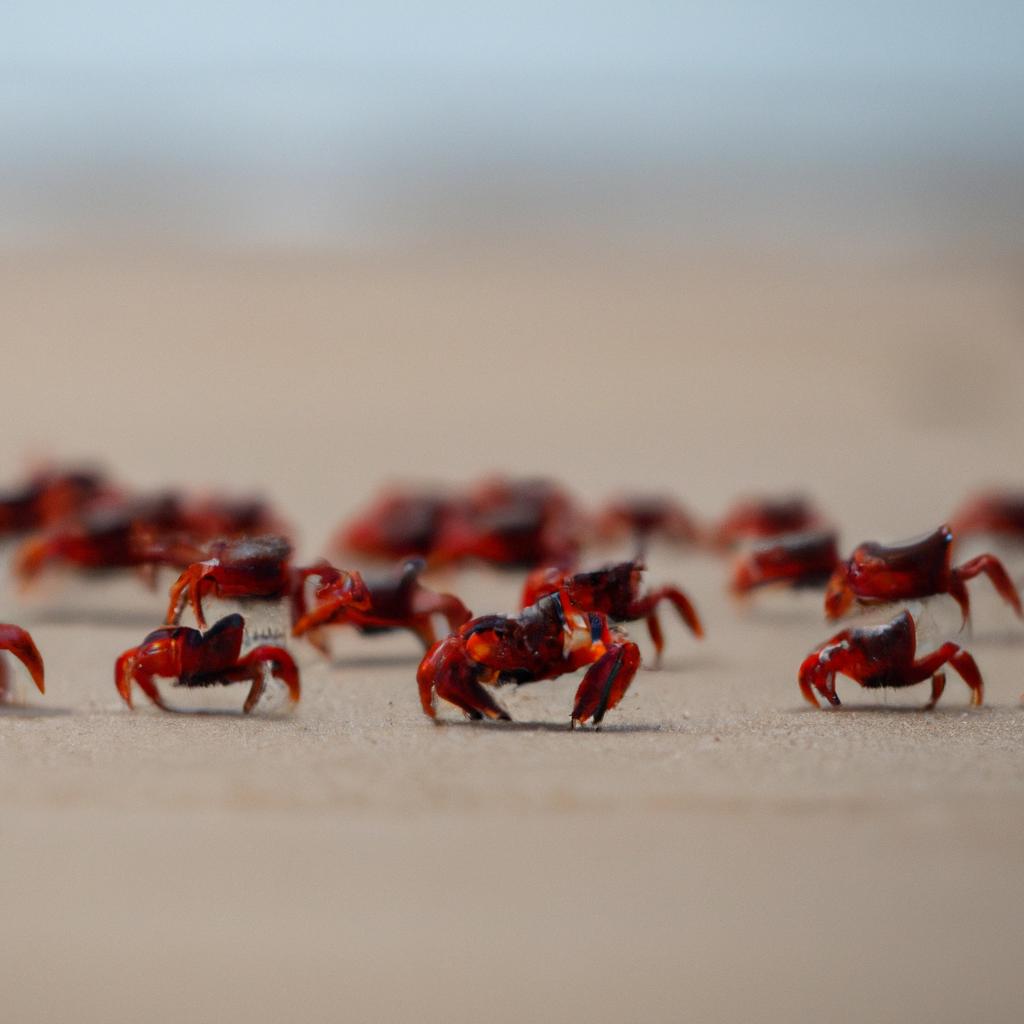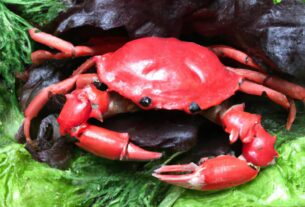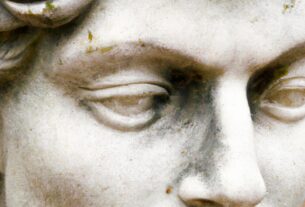Red crab migration is a mesmerizing event that takes place annually on Christmas Island, a picturesque Australian territory in the Indian Ocean. This remarkable display of nature’s wonders attracts visitors from all corners of the world. Let’s embark on a journey to explore the fascinating world of red crabs and their incredible migration.
What Makes Red Crabs Distinctive?
Red crabs, also known as Christmas Island crabs, are a unique species of land crab endemic to Christmas Island. Their distinctive bright red color and large claws make them easily recognizable. What adds to their charm is the high concentration of hemocyanin in their blood, which gives them their vibrant appearance. These land-dwelling creatures spend most of their lives in the island’s dense rainforest.
Habitat and Traits of Red Crabs
The rainforest covering Christmas Island serves as the primary habitat for red crabs. Here, they dig burrows in the forest floor, providing them shelter and protection from the elements. With their hard exoskeletons, these crabs safeguard themselves against predators and ensure their bodies retain moisture. Red crabs are typically herbivorous, feeding on fallen leaves, fruits, and flowers.
Life Cycle of Red Crabs
The life cycle of red crabs revolves around their annual migration. After the wet season, male crabs dig burrows near the coast, eagerly awaiting the arrival of females. Once the females arrive, they mate, and the females release their eggs into the sea. The eggs hatch into larvae, spending several weeks in the ocean before returning to the island’s shore as juvenile crabs.
These juveniles then make their way to the rainforest, where they spend years maturing and growing. Upon reaching maturity, they join the annual migration, embarking on a perilous journey to the coast for breeding and spawning. While navigating through a maze of obstacles, such as roads and predators, these crabs demonstrate their remarkable adaptability and resilience.
The Fascinating Phenomenon of Red Crab Migration
The red crab migration is an extraordinary and unique spectacle on Christmas Island. Triggered by the arrival of the wet season, usually in November or December, the crabs emerge from their forest burrows and embark on their journey to the coast, where they will fulfill their reproductive cycle.
The Purpose and Challenges of the Migration
The migration of red crabs serves the sole purpose of reproduction. By mating and laying their eggs in the ocean, the crabs ensure the survival of their species. However, the journey is far from easy. Red crabs face numerous obstacles as they navigate their way through roads, buildings, and other hazards. Alongside these challenges, they must also protect themselves from predators. Yet, the crabs have evolved unique behaviors and adaptations to overcome these hurdles.
Timing and Duration of the Migration
The timing and duration of the red crab migration coincide closely with the wet season. Typically commencing in November or December, shortly after the wet season’s onset, the migration continues for several weeks until the crabs reach the coast and complete their reproductive cycle.
Although the exact timing and duration can vary each year due to factors such as weather conditions, temperature, and rainfall, the general pattern of the migration remains consistent. Visitors to Christmas Island can witness this awe-inspiring natural spectacle, one that becomes etched in their memories forever.
The Impact of Red Crab Migration
The red crab migration holds not only ecological significance but also considerable economic importance for Christmas Island. Let’s delve into the importance this migration holds for the island’s ecosystem and its inhabitants.
Ecological Significance of the Migration
The red crab migration plays a vital role in the island’s ecosystem. These crabs contribute significantly to the rainforest’s nutrient cycle by consuming fallen leaves and recycling organic matter back into the soil. Additionally, their burrowing activities aerate the soil, promoting plant growth and nurturing the forest’s health. Furthermore, the crabs become a source of food for various animals on the island, with predators feasting on them during their journey and their feces enriching the island’s flora.
Economic Importance for the Christmas Island Community
The red crab migration also bears economic importance for the Christmas Island community. The island’s tourism industry flourishes due to this annual event, attracting visitors from all over the globe to witness this phenomenon. The migration has become a major tourist attraction, sustaining various local businesses and livelihoods.
Moreover, the red crab fishery significantly contributes to the island’s economy. With their succulent meat prized as a delicacy in Asia, the fishing industry provides employment opportunities for locals and generates income for the island.
In conclusion, the red crab migration holds both ecological and economic significance for Christmas Island. It is not only a testament to nature’s wonders but also an integral part of the island’s identity and economy.
Red Crab Migration and Conservation
While the red crab migration is an incredible natural phenomenon, it faces numerous threats that endanger their populations. Habitat loss due to deforestation and land development poses a significant challenge for red crabs. The island’s rainforest, crucial to their survival, diminishes as human populations grow and more land is cleared for development. The loss of habitat makes it increasingly difficult for the crabs to find food and shelter, leading to a decline in their populations.
Additionally, the introduction of non-native species can compete with red crabs for resources and prey upon them, further impacting their numbers.
To protect red crab populations, various conservation efforts and initiatives have been implemented. Establishing the Christmas Island National Park in 1980 was a significant step towards safeguarding the island’s natural habitat, including the rainforest where red crabs reside. The implementation of strict regulations to limit development and safeguard the island’s unique ecosystem represents further progress.
The Christmas Island Red Crab Project, a joint effort between the Christmas Island National Park and the Australian government, aims to monitor and protect red crab populations. The project involves tracking the crabs’ movements, assessing threats to their populations, and implementing conservation measures.
In conclusion, the red crab migration showcases the resilience and adaptability of nature’s creatures. As we witness this annual event, we come to appreciate the importance of conservation efforts in protecting unique wildlife, such as red crabs, on Christmas Island and beyond.
At TooLacks, our commitment lies in raising awareness about nature’s wonders and the significance of conservation. We hope this article has provided you with valuable insights into the intriguing world of red crabs and their remarkable migration.
Thank you for joining us on this journey, and remember to always cherish and preserve the natural world around us.


